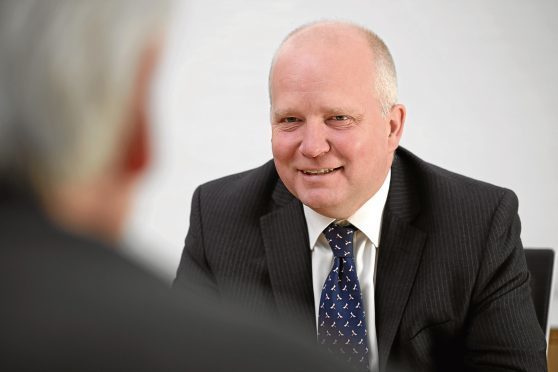When Chancellor Philip Hammond sat down following his Budget speech I was not gripped by a sense of wild excitement.
The well-trailed news on transferable tax allowances between the old and new owners of oil and gas fields, and the surprise increase in the R&D tax credit to 12% have positive implications.
Companies which invest in technologies aimed at either extending fields’ productive life and/or decommissioning should, hopefully, have more to shoot at, more time to shoot at it and more help with the cost of developing the fire power.
The huge financial pressures on the industry remain in place – the superabundance of “to let” signs around the north-east is testament to that.
But there are undoubtedly more deals happening now than there were a year ago. The optimism remains cautious but the changes seem like a step in the right direction.
Beyond that, the headline-grabbing changes on stamp duty, business rates and the higher rate threshold won’t apply in Scotland – except to the extent that they put pressure on the Scottish Government to respond in its Budget on December 14.
If you examine the detailed workings of the tax system, this pressure plays into the debates about the UK’s stubborn problem of productivity and the rate of income tax in Scotland.
Under the present system, your personal tax allowance and the tax relief you receive for pension contributions are “tapered” away at £1 for every £2 you earn above certain limits.
If both reliefs are being tapered away at once, then you end up paying tax on £2 for every extra £1 that you earn – that’s already a marginal tax rate of up to 90% (92% if you add national insurance).
Marginal rates of 60% and 67.5% are also encountered as your income grows.
You need to be earning more than £210,000 before the marginal rate of tax returns to 45% of your next £1 of profit.
Economists argue over where the optimum rate of tax should be set in order to generate most revenue. Most would agree that 92% is too high and 100% tax is, well, communism.
Small and micro enterprises – the backbone of our economy, as politicians of all persuasion are fond of repeating – and their owners might well find themselves in the income bracket most affected by these high marginal rates of tax.
How would that make you feel if you were thinking about borrowing money to invest and grow your small business?
Whatever your answer, increasing the rate of income tax does not sound like a cure for Scotland’s productivity issues.
Housing incentives were the chancellor’s other big play and the reaction to these has been mixed.
Commentators seem sceptical about whether the changes will lead to more affordable and social housing.
They all seem to agree that this is a government issue that should be funded directly out of taxation.
Why? Tax can be used as a carrot as well as a stick.
We already offer inheritance tax relief to investors in businesses, so why not offer it to long-term investors in regulated social housing or public infrastructure projects?
At the end of 2016/17, the total market value of adult Isa (individual savings account) holdings stood at £585billion, with more than £300billion held in cash Isas alone. Just saying.
